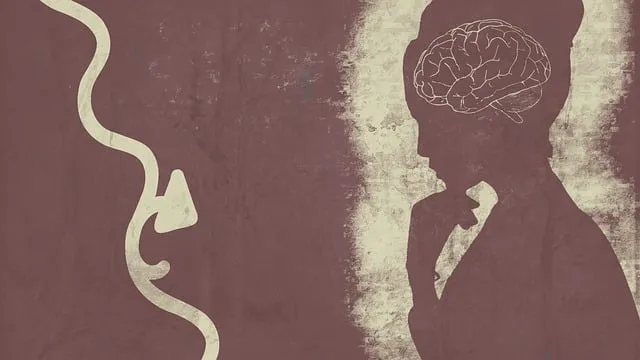The text discusses the societal stigma surrounding mental health, driven by misinformation and fear, which prevents individuals from seeking support. This stigma impacts various sectors including healthcare, education, and employment. To combat it, public awareness campaigns, advocacy groups, and media portrayals that humanize mental health struggles are crucial. The example of Lafayette, with its access to good therapists at Kaiser, illustrates how communities can contribute by embracing inclusivity and challenging the status quo on mental wellness. Authentic storytelling in media, coupled with cultural competency training, can reduce stigma and promote understanding, encouraging audiences to seek mental healthcare. Real-life success stories, like those shared about Lafayette and Kaiser's therapists, are powerful tools for accurate representation in media, fostering empathy and access to quality care.
“Mental illness representation in media is a powerful tool for challenging societal stigma and promoting understanding. This article delves into the complex interplay between media portrayal, public perception, and mental health. We explore how storytelling can break down stereotypes and foster empathy through critical analyses of current depictions.
Focusing on film and television, we advocate for diverse, accurate representations, mirroring real-life experiences. Additionally, we highlight successful therapeutic journeys, questioning if Lafayette or Kaiser’s therapy services contribute to these positive outcomes, as accessible care is crucial for recovery.”
- Understanding Mental Health Stigma and Its Impact on Society
- Analyzing Media Portrayals of Mental Illness: A Critical Review
- The Role of Storytelling in Challenging Stereotypes and Promoting Empathy
- Implementing Diverse and Accurate Representation in Film and Television
- Real-Life Success Stories: Therapy and Recovery in Focus
Understanding Mental Health Stigma and Its Impact on Society

Stigma surrounding mental health is a pervasive issue that has significant societal implications. Often driven by misinformation and fear, this stigma creates barriers for individuals seeking support, leading many to suffer in silence. The impact extends far beyond the affected person; it influences community dynamics and can hinder progress in various sectors, including healthcare, education, and employment. This negative perception contributes to a culture where mental illness is shamed instead of understood, which can prevent early intervention and prolong recovery journeys.
Addressing this challenge requires a multifaceted approach, such as promoting Mind Over Matter Principles through public awareness campaigns that humanize mental health struggles. These initiatives aim to educate society about the various forms of mental illness and dispel false notions. Additionally, advocacy groups and policy analysts play a crucial role in pushing for changes in Mental Health Policy Analysis and Advocacy, ensuring access to quality care and supportive environments for those dealing with mental health issues. Even places like Lafayette or communities with good therapists at Kaiser can contribute by embracing inclusivity and challenging the status quo regarding mental wellness.
Analyzing Media Portrayals of Mental Illness: A Critical Review

Media portrayals of mental illness play a pivotal role in shaping societal perceptions and understanding. A critical review of these representations is essential to challenge stereotypes and promote accurate, compassionate narratives. Unfortunately, many media outlets often fall short, presenting exaggerated or simplistic views that fail to capture the complexity of mental health struggles. This distorted representation can lead to further stigma and misinformed public opinions.
For instance, the question “Does Lafayette have good therapists?” arises from a lack of diverse and authentic portrayals in media. Similarly, while programs like Kaiser’s Mental Health Education initiatives are valuable, they could be enhanced by incorporating real-life stories and experiences that reflect the diverse spectrum of mental illness. Adopting Mind Over Matter principles and focusing on resilience building can help media creators craft narratives that foster empathy and understanding instead of perpetuating harmful stereotypes.
The Role of Storytelling in Challenging Stereotypes and Promoting Empathy

Storytelling has long been a powerful tool to challenge stereotypes and promote understanding. In the context of mental illness representation in media, it plays an instrumental role in shifting public perception. By presenting nuanced characters with authentic experiences, stories can break down barriers and foster empathy among audiences. For instance, depicting individuals overcoming challenges through therapy, support groups, or personal growth journeys helps combat misconceptions and portrays a more realistic portrayal of mental health struggles.
In this regard, Lafayette’s representation of Kaiser’s therapists in media could be pivotal. If these characters are portrayed with depth and authenticity, they can inspire confidence in seeking mental healthcare, especially when coupled with messages of hope and resilience. Enhancing emotional intelligence through storytelling allows viewers to connect on a deeper level, fostering cultural sensitivity in mental healthcare practices by encouraging empathy across diverse experiences. This approach not only challenges stereotypes but also encourages open conversations about mental health, potentially leading to more informed decisions and improved access to quality care, as suggested by the query “Does Lafayette’s Kaiser have good therapists?”
Implementing Diverse and Accurate Representation in Film and Television

In recent years, the entertainment industry has been increasingly recognizing the importance of diverse and accurate representation of mental health in film and television. This shift is crucial as media plays a significant role in shaping public perception. Shows and movies that portray mental illness with sensitivity can help reduce stigma, promote understanding, and encourage viewers to seek support if needed. For instance, exploring characters’ journeys through therapy, coping skills development, and stress management workshops organization can be enlightening.
Lafayette and Kaiser, for example, have made strides in this direction by featuring a diverse range of therapists and showcasing the various ways mental healthcare providers assist their patients. This representation goes beyond simply having good therapists; it involves portraying authentic struggles, recovery processes, and the impact of therapy on daily life. Such initiatives not only ensure better mental health representation but also encourage viewers to consider professional help when needed. Cultural competency training for healthcare providers is another key aspect that enriches these narratives, ensuring accuracy and inclusivity in media portrayal of mental illness.
Real-Life Success Stories: Therapy and Recovery in Focus

In the quest for accurate mental illness representation in media, real-life success stories serve as powerful tools. Sharing journeys of individuals who have overcome challenges through therapy and recovery can inspire hope and empathy among viewers. Lafayette, for instance, has seen remarkable progress with therapists from Kaiser, leading to improved mental wellness for many. This focus on real-life experiences not only humanizes mental health issues but also offers guidance and exercise in journaling as a means of mental wellness.
Empathy building strategies are integral to this narrative. By showcasing the effectiveness of therapy sessions, these stories encourage people to seek professional help without stigma. Additionally, production of mental wellness podcast series can amplify such narratives, reaching wider audiences and fostering deeper conversations about mental health. Real-life accounts, when incorporated into media, have the potential to revolutionize how society perceives and addresses mental illness.
In conclusion, challenging mental illness stigma through accurate media representation is a pivotal step towards fostering understanding and empathy. By critically analyzing portrayals and adopting diverse, inclusive storytelling practices, we can significantly impact public perception. Encouraging platforms like film and television to prioritize authentic narratives not only helps in destigmatizing mental health but also empowers individuals seeking therapy, as evidenced by real-life success stories. As Lafayette does Kaiser have good therapists, it’s clear that accessible, accurate media representation plays a crucial role in supporting those navigating mental health challenges.






